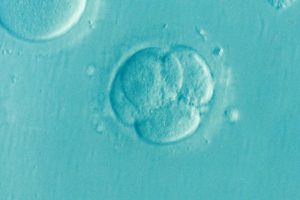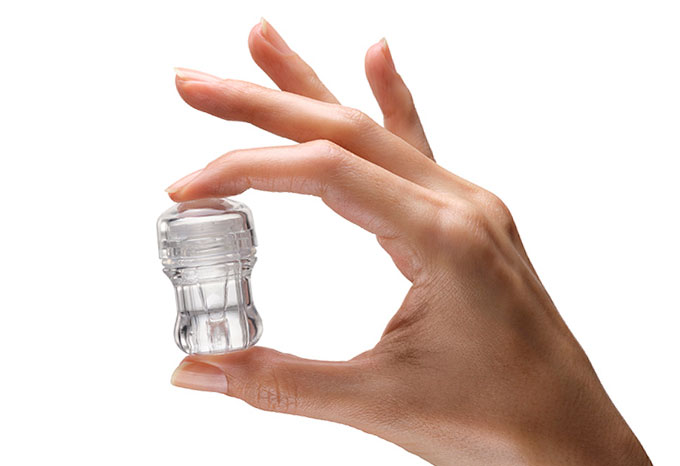
INVOcell
If you are 35 to 37 or younger, INVOcell may be a less expensive option with success rates similar to IVF.
INVOcell is still a relatively new option for fertility treatment and is currently only available for women who are age 37 or younger who have an AMH level of 1.0 or greater. However, some fertility clinics will only perform this treatment on women who are 35 or younger.

The INVOcell process is nearly identical to IVF, with two significant exceptions: 1) less stimulation medication is needed and 2) fertilization and incubation during early embryo development does not happen in the lab. Instead, that process occurs within the INVOcell device, which is placed within the woman’s vagina for several days until embryo transfer.
Cost
INVOcell is often less expensive than IVF, since it does not require the use of laboratory procedures. The total cost of INVOcell is typically between a third to one-half the cost of IVF (putting INVOcell at approximately $4000 to $7000, including medication), depending on the fertility clinic. In addition to the cost of the INVOcell procedure itself, donor sperm from a cryobank will cost anywhere from approximately $350 to $1200, depending on which cryobank you use, whether it is an anonymous or ID release donor, and what type of vial you purchase (ART is typically the most cost effective, but some clinics require you to purchase unwashed sperm so their laboratory can wash the sample).
Donor options
As a single woman, it is typically easier to use frozen sperm from a cryobank because it has already undergone rigorous testing and is easier to access. For INVOcell, any type of vials (ICI-ready, IUI-ready, ART) may be used but oftentimes ART vials are the most cost effective. However, there are clinics that prefer ICI-ready (unwashed) vials be ordered because the clinic prefers to use their laboratory to wash the sperm. If you prefer using a known donor, that is a possibility as well. However, in order for known donors to be used, most fertility clinics require testing and joint counseling for both parties before treatment can begin.
Leading up to INVOcell
In order to prepare for your treatment, your fertility clinic will order a series of blood work to determine course of action to help get your body prepared. It is possible that your insurance will cover such testing, if it is performed by an in-network lab. It is also possible, if you are using a fertility clinic but live several hours away, to coordinate some of the testing and monitoring efforts with your OB/GYN office.
INVOcell does require hormone treatments in order to stimulate the ovaries and those come in the form of self-administered injectables. Typically, you will need to inject medications for up to 10 days but some clinics may have their patients inject for longer periods of time both before and after INVOcell. While the injections beforehand are designed to enhance ovulation, progesterone injections may be prescribed afterwards in order to aid implantation and help prevent miscarriage.
Usually, the injection sites are either in the belly or front of your thigh and while this may sound too difficult to tackle on your own, it is often not nearly as traumatic as it is imagined it to be. If you notice unusual symptoms (redness, bruising, irritation, etc) near the injection areas, contact your fertility clinic for advice; if that happens and you are using more than one medication at a time, your clinic may ask you to inject each medication into a separate location so you can identify exactly which medication is causing the reaction.
What to expect during INVOcell
The INVOcell process is complex but it is a relatively painless outpatient procedure. While the process does not differ very much between clinics, it is always best for you to ask the fertility clinic(s) you are considering what their procedures are. However, this section is useful for gaining insight on what to expect.
Egg Retrieval: As with IVF, INVOcell involves a process of stimulating the ovaries to enhance egg production for egg retrieval. Since INVOcell stimulation protocols are milder and require less medication than IVF, fewer eggs will be retrieved. It is common for INVOcell retrievals to yield anywhere from a few eggs to more than 15 in order to ensure enough healthy, viable eggs are retrieved. However, a maximum of 7 eggs can be placed within the INVOcell device. If more than 7 eggs are gathered during retrieval, the remaining eggs may be frozen for future use or donation.
Fertilization: Once the eggs have been retrieved, they are placed within the INVOcell device with sperm for fertilization. The INVOcell device is then placed within the vagina for approximately 72 hours for fertilization and incubation.
Genetic testing (known as PGS testing) is usually offered as an option after fertilization and before embryo transfer, which helps determine the highest quality of embryos. Since it is common for miscarriages and failed INVOcell cycles to be the result of chromosomal abnormalities, research has shown that using PGS testing and transferring only chromosomally normal embryos provides up to a 23% increase in the success rate of INVOcell.
Embryo Transfer:
Embryo transfer day occurs after the embryos have developed, which is anywhere between 2 to 5 days after egg retrieval day. The doctor will again administer mild pain medication and/or a mild sedative and insert a long, flexible tube will be inserted through the cervix into the uterus to transfer the embryo(s) into your uterus.
If the procedure was successful, an embryo will implant into the uterus within 10 days after egg retrieval day.
What to expect after INVOcell
After INVOcell, as with all other fertility treatment procedures, you may experience cramping and this is completely normal. It is best to take it easy for the remainder of the embryo transfer day. From this point onward, it is best to behave as though you are already pregnant: eat well, pamper yourself, and avoid extreme temperatures and strenuous activities (light exercise is good, but avoid HIIT and stop if you feel discomfort or pain, avoid raising your core body temperature and keep your heart rate under 140).
Your fertility clinic may want to monitor you further, but typically clinics only need to be notified if the procedure was a success (after being confirmed by a BETA test performed by your physician or OB/GYN). Find out what to expect during the two week wait (tww)!
How Ovulation Works
Best Ways to Improve Fertility
Conception Options
How Ovulation Works
Best Ways to Improve Fertility
Conception Options
Browse all Articles:
Trying to Conceive
Pregnancy
Motherhood
Self Care
SingleMomsByChoice.org is run by single moms by choice for single moms by choice, dedicated to helping educate, enlighten and empower women who are thinking about or who have decided to have a child “on their own” through donor insemination, egg or embryo donation, adoption or other assisted means.


